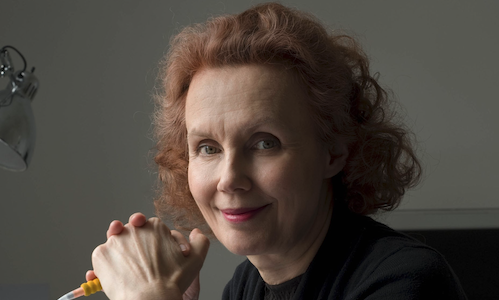Frises
Item
-
Score title
-
Frises
-
Composer
-
Kaija Saariaho
-
Program note
-
Frises was born of violinist Richard Schmoucler's request who told me of his idea of combining different works around Bach's second partita for solo violin, particularly in relation to the last part, the Chaconne. He asked me to compose a piece to be performed after Bach's Chaconne and start it with the note that ends this second partita movement, the D.
My piece has four parts. I focused in each of them on the idea of one historical ostinato variation form, using as starting point carillon, passacaglia, ground bass and chaconne. There are four variations around a theme, a harmonic process or other musical parameter.
To expand the ideas and possibilities of the instrument, I added an electronic dimension to the work. According to its character, each part has a different processing. In general and in accordance with the score, prepared sound materials are set off by the musician during the piece. These materials are completed by real-time transformations of the violin sounds.
My aim in composing this piece was to create a rich work for violin with four very different and independent parts. The first part, "Frise jaune," is a prelude, a flexible improvisation around a constant D, coloured by harmonics and the electronic part consisting of bell sounds. This part is also inspired by the idea of <<carillon>>, a continuous melodic variation.
The second part, "Frise de fleurs," is based on a harmony created on a ground bass. Sequences of successive chords are gradually enriched before opening to achieve a more free and lyrical development.
The third part, "Pavage" is inspired by transformations of a source material by a mathematical process where a frieze is a filling of a line or a band by a geometric figure without holes or overflow, like the paving. But I do not work in the sense of perfect symmetry – as with the cobblestones of a patterned ground – rather to create continual metamorphosis, in the spirit of some MC Escher's images, though less consistently.
The last part, "Frise grise," is like a strange procession, solemn, fragile, but at the same time solved. The idea of passacaglia is here realized with slow triplets, the constant accompaniment of the left hand pizzicati on three strings, while the melody is evolving on the fourth which is not part of the accompaniment. The thematic material evolves descending slowly from E – the highest string – to G – the fourth string. The music finally reaches the initial D in double stop which take us back to the beginning of the piece.
The titles are inspired by the mathematical ideas mentioned above but also by Odilon Redon's painted friezes which I saw recently in an exhibition dedicated to his work; especially the Yellow Frieze, Frieze of Flowers and Gray Frieze.
Frises was composed for and dedicated to Richard Schmoucler, and commissioned by the Borusan Art Centre, Istanbul.
Kaija Saariaho – 2012
 Kaija Saariaho
Kaija Saariaho

